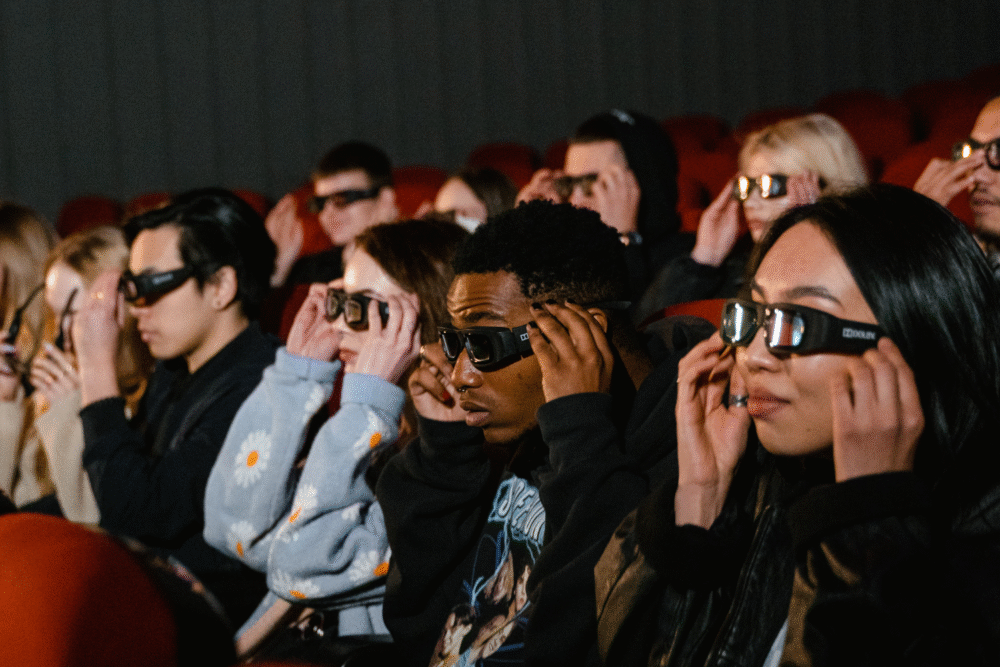Big movies are less about art alone and more about scale.

Blockbusters aren’t just creative projects; they’re financial machines. Behind every explosion and star-studded cast is a network of strategies that maximize revenue, expand reach, and reduce risk. Hollywood has turned event films into case studies in business.
These ten strategies don’t just shape cinema—they influence how audiences spend and how studios plan. Together, they explain why the biggest movies dominate screens worldwide.
1. Shared universes keep audiences returning.

Building interconnected stories turns films into episodes of a larger saga. Fans stay hooked, not just for one movie but for the entire franchise.
Studios win by locking in long-term interest. Once audiences commit, they’re likely to buy tickets for every new chapter, merchandise, and spin-off. It’s storytelling as customer retention.
2. Global casting broadens markets.

Studios increasingly cast stars from multiple regions to attract international audiences. Familiar faces boost ticket sales abroad while diversifying appeal at home.
It’s a deliberate move. Blockbusters aren’t made for one country—they’re engineered for worldwide screens. Casting becomes as strategic as plotlines.
3. Strategic release dates maximize hype.

Summer weekends, holiday breaks, and long weekends become battlegrounds for premieres. Timing ensures maximum audience turnout and free word-of-mouth promotion.
Releases positioned against weaker competition dominate box offices. For studios, the calendar is as critical as the script.
4. Heavy reliance on pre-sales secures funding.

Studios often sell distribution rights globally before films release, covering budgets before the first ticket is sold. Pre-sales reduce risk and guarantee revenue.
This approach turns big movies into safer bets for investors. By the time audiences arrive, studios are already in profit territory.
5. Product placement turns scenes into ads.

Cars, drinks, and tech gadgets slip into scripts for a fee. These placements lower production costs while giving brands instant exposure.
For audiences, it’s subtle—sometimes. For studios, it’s a lucrative partnership that stretches profits beyond ticket sales.
6. Digital-first marketing drives anticipation.

Trailers debut online, teaser drops dominate social media, and influencers hype openings weeks in advance. Viral moments now matter as much as reviews.
Marketing budgets rival production costs, but the payoff is cultural saturation. By release weekend, the film already feels unavoidable.
7. Cross-media tie-ins extend the universe.

Comic books, TV spin-offs, and games keep audiences immersed between releases. Each tie-in builds brand loyalty and deepens the story.
Studios turn films into ecosystems, where one ticket sale is just the beginning. Cross-media keeps momentum alive between blockbusters.
8. Advanced tech raises the spectacle bar.

IMAX, 4DX, and CGI innovations make theaters feel essential. These upgrades justify higher ticket prices and lure audiences away from streaming.
For studios, investing in spectacle isn’t just creative—it’s strategic. Bigger experiences mean bigger margins.
9. Strategic partnerships expand reach.

Studios pair with global brands for co-marketing. Fast-food chains, clothing lines, and tech companies carry the film into everyday spaces.
These partnerships embed the blockbuster into culture, ensuring visibility far beyond theaters. Marketing becomes a shared cost, multiplied across industries.
10. Merchandising sustains long-term revenue.

Action figures, clothing, and collectibles generate profits long after a film leaves theaters. Merch extends the financial life of a blockbuster for years.
For studios, this strategy is almost risk-free. A movie may fade, but merchandise lingers, keeping the brand profitable long after credits roll.
